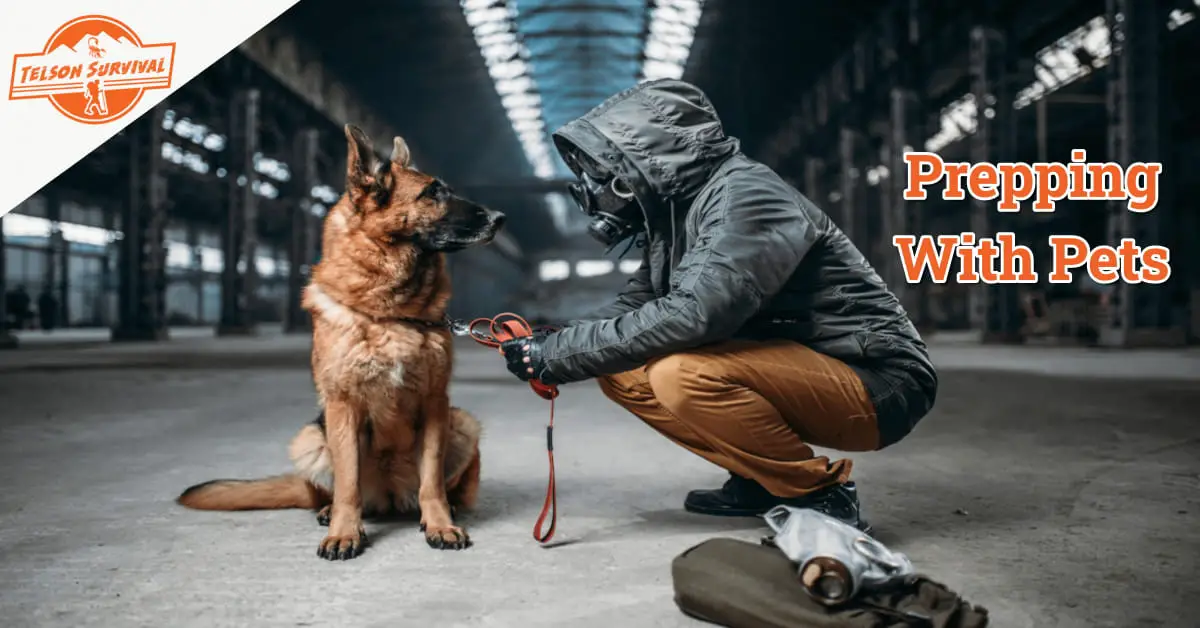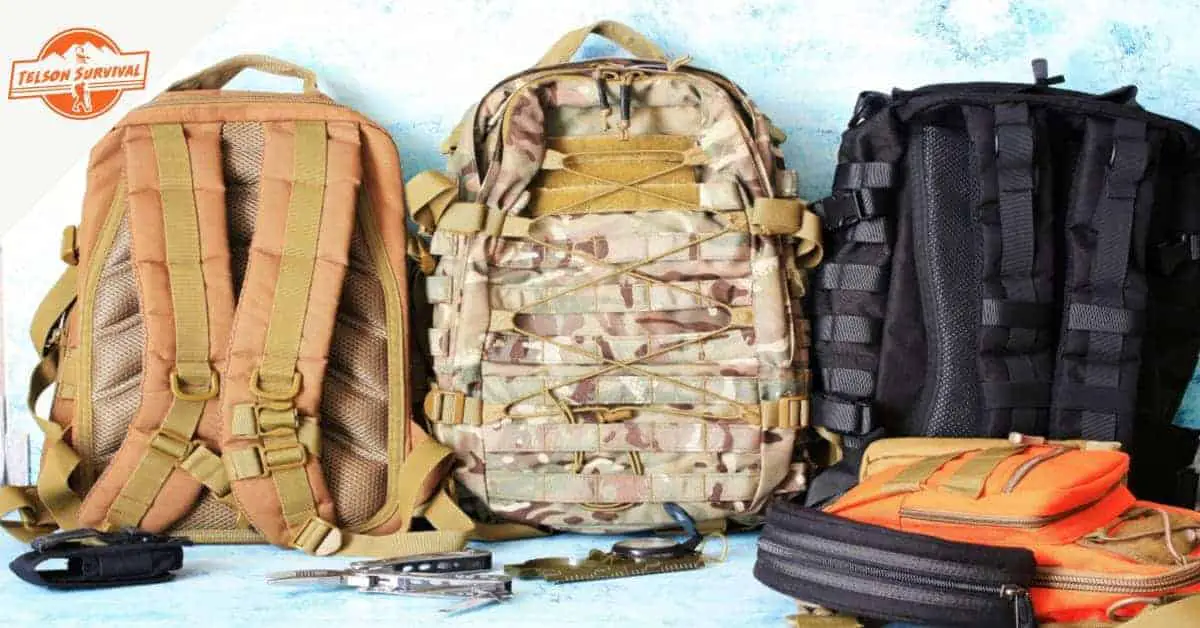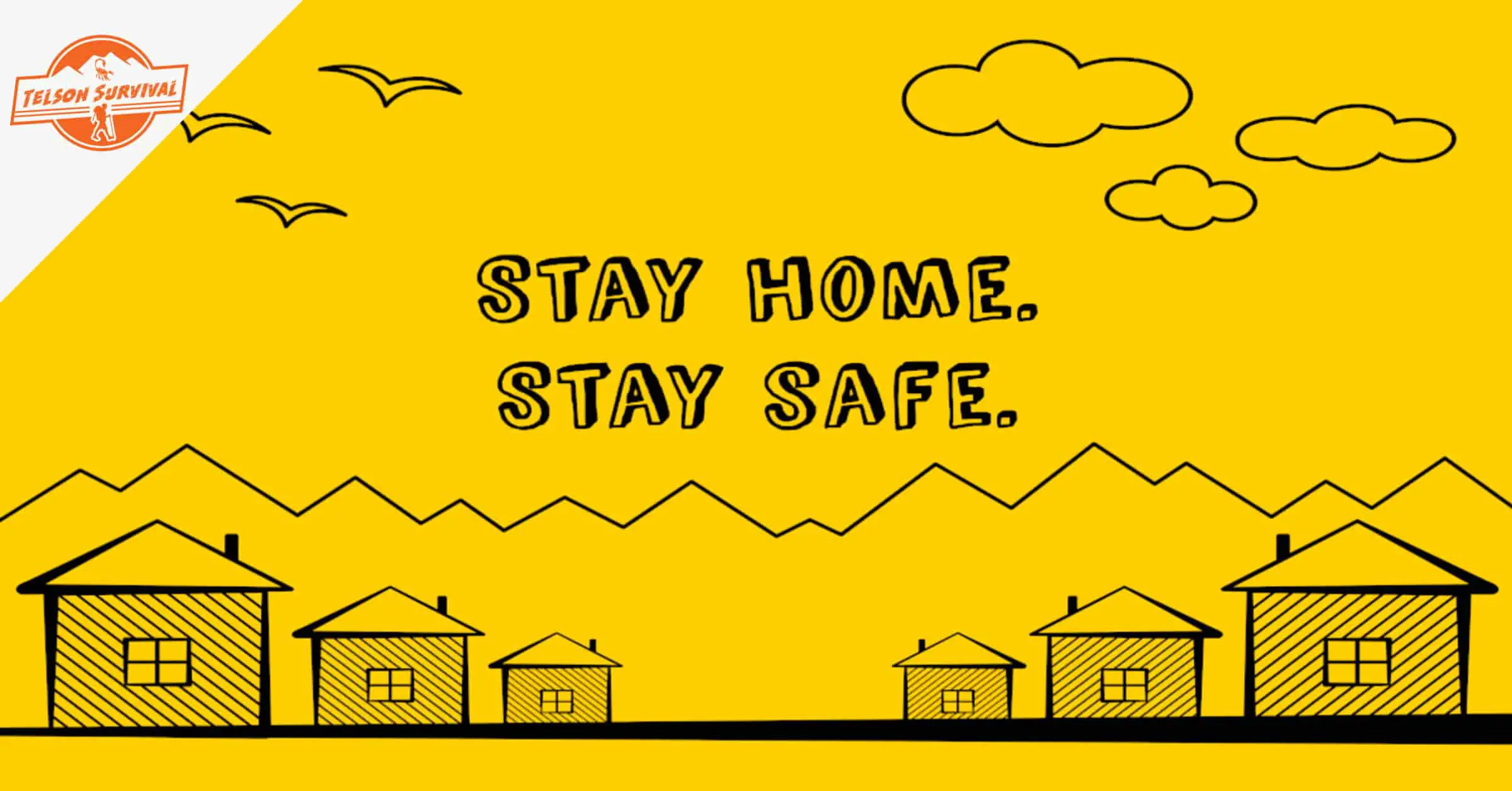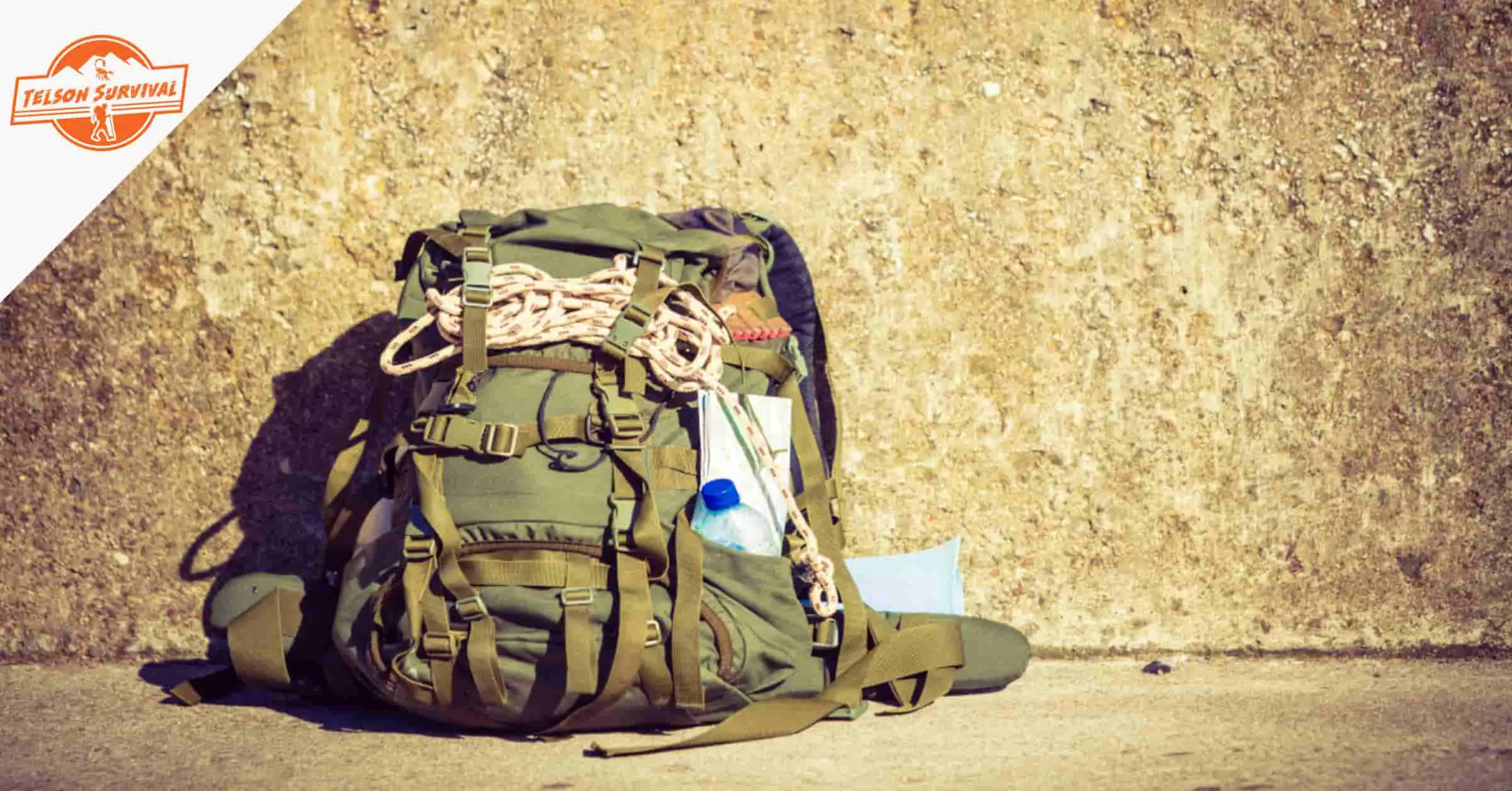Once you start the giant undertaking of prepping your family for when SHTF, you may become so focused on building the perfect bug out bag, stockpiling emergency survival food, and researching the best survival gear that you forget about certain four legged members of your family.
Even if you are not the sentimental type that refers to their pets as fur babies, chances are you care about the animals you have taken under your wing. They depend on you for their food, shelter, safety, and health care needs - and when SHTF, they'll depend on you for their survival as well.
There are many reasons why it is worth the effort to keep our animals safe when the going gets rough.
In a TEOTWAWKI situation, our animals can be the key to our long term survival! They can provide us a sense of companionship and wellbeing, alert us to danger, keep our homes safe from vermin, provide transportation and pack services, and, in extreme cases, they can become an invaluable source of food.
Prepping with pets is, fortunately, not very complicated. It does, however, require a certain amount of research and investigation. And much like every other prep you will make, you will need to invest a certain amount of time and money into making sure your pets are adequately included in your family survival plan.
In this guide for prepping with pets, we’re going to get you pointed in the right direction for making individualized pet prepping plans, talk about the specific considerations you need to take into account for different kinds of pets and animals, and discuss the essential prepping supplies you will need for your pets. We’re also going to dig into bugging out or evacuating with your pets in an emergency.
Our pets and animals are our responsibility, and as preppers, we need to take their survival seriously. Keep reading to get the lowdown on prepping with pets and other animals.
What is a Pet Prepping Plan?
A pet prepping plan is just like any emergency plan you will develop for the members of your family. It is, however, specific to your pets and the unique needs that they may have.
The emergency preparedness plan that you develop for your pet will depend on several factors:
- What kind of natural disasters and other emergencies you are most likely to encounter where you live.
- What kind of pets or animals you have in your home.
- The individualized health needs and special considerations of each animal.
If you have a variety of pets, for example, a couple of dogs, a cat, and a bunch of backyard chickens, then you will need to come up with a specific plan of action for each group of animals.
You will need to thoroughly think through the different survival scenarios and focus on how your animals fit into each one. Specifically focus on your animal's needs for bugging in, bugging out, and emergency medical situations.
General Pet Prepping Tips
As we mentioned, properly prepping for pets has everything to do with what kind of animal you have. The most common pets are dogs and cats. Many people also have more 'exotic' pets like snakes, lizards, rodents like hamsters or guinea pigs, and some of you may even count on a well stocked fish tank.
If you have ventured into the world of survival farming or animal husbandry, you might have goats or sheep, pigs, equines, or even a cow or two. These animals, while harder to move, are just as important to save when SHTF.
Eventually, we're going to discuss specific preps that you can do depending on the type of animal you are dealing with.
But before we jump into that, let’s take a moment to discuss some universal preps that apply to every pet or animal, regardless of their species.
- Maintain each animal up to date with its vaccinations and keep an official vaccination record. Many shelters that receive pets and animals in an emergency require proof of vaccinations to admit a pet with their owner. Aside from that, it is just a good idea. When SHTF, the last thing you need is a sick or dying animal that has a completely preventable disease.
- Stockpile animal food. This should be done with the same methodology that you use to stockpile food for your family. Rotate through your supplies and always use the oldest first. Consider repackaging bulk food purchases in mylar bags to extend shelf life for the household pets. For farm animals, consider bulk purchases of feed or hay, and never let your stores get below a one-month supply.
- Have a water plan. This may include stockpiling bottled water for house pets and other small animals or installing a water storage tank for livestock. Depending on the conditions where you live, you may do fine investing in a simple water filter. Never forget that animals can die from dehydration just like people. Clean water is a survival essential for every living being.
- Stockpile medicines and veterinary supplies. If your animal has specific health concerns and requires prescription medications, speak to your veterinarian about purchasing an emergency supply. Otherwise, be sure to invest in emergency antibiotics, vitamins, flea and tick control, and dewormers. It is also a good idea to invest in an emergency antiseptic wound spray as well.
- Research where you can go. If you only have smaller pets, identify ahead of time with the Red Cross which emergency shelters will accept pets and what their requirements are. For larger animals, identify refuges or seek out landowners who will receive you and your animals in a pinch. Make a list of bug out options and keep it with your emergency plans.
- Train your animals. Whether it be a dog, a cat, a goat, or a horse, each animal needs to be well trained to be transported with a minimum of stress. They should be familiarized with the crate, pen, carrier, or trailer that they will be moved into.
- Create an identity card or folder for each animal. This card should include an up-to-date photo of each pet or farm animal. It needs to have your name and contact information, along with an alternative contact in case you cannot be found. Be sure to include any relevant details about the animal's health status and medications they may need. If your animal is micro-chipped, include that relevant information as well. Keep a laminated, waterproof copy with the animal (on their crate, cage, or trailer) and keep a copy in your bug out documents.
- Have a Bug Out Kit with animal appropriate gear. A backup harness, leash, food and water dishes, and a three day supply of food and water should be prepped and ready to grab along with your own personal bug out bag.
Now that we have covered those basics, let's jump into the specifics of each type of animal.
Survival Prepping for Dogs
In today’s society, most dogs are typically well trained to go into cars, to walk on a leash, and to stay in their crate. These are norms that most responsible dog owners incorporate into their lives with a pet.
But there are some aspects of prepping for dogs that you may not have thought of. As you may have assumed, the most important prepping starts with how you train your dog. A well trained dog is a well prepped dog. Be sure to incorporate the following into your pooch’s education.
- Bark Training: Your dog needs to be taught how to bark on command and be silent on command.
- Indoor Potty Training: If you cannot let your dog outside for whatever reason, it is helpful for your dog to know how to use a litter box or specific area of the home to do its duties. This is particularly useful for urban preppers.
- Muzzle Training: Your dog may be a saint, but you still need to teach it how to tolerate a muzzle on its snout. In an intense situation, or while injured or scared, a normally docile dog may become aggressive out of self defense. Keeping them in a muzzle is a good idea in stressful times.
- Weight training: Useful for large breeds, put your dog to work carrying small loads or their own bug out supplies. Train them to wear a canine utility vest. This will make them useful members of your team if you need to bug out.
Last update on 2025-01-14 / Affiliate Links / Images from Amazon Product Advertising API
One other factor to consider is your dog’s overall health. Keep your dog a healthy weight and make sure they get plenty of physical activity. This will help assure they have the strength and stamina to survive less than ideal circumstances.
For elderly dogs with mobility issues and special health considerations, you will want to think about investing in a special trailer, stroller, or bike cart to help mobilize your pet in an emergency evacuation.
Survival Prepping for Cats
When it comes to prepping for cats, it may be tempting to trust that your cat can fend for itself. They are, after all, notoriously independent. Cats instinctively know how to stay hidden, hunt for their next meal, and avoid people they do not know.
Plus, cats are famously bad at being transported in cars, in cages, or walking on leashes. But these are precisely the things you need to train your cat for if you want it to be prepared for emergencies.
Leash and harness train your cat. If the situation outside becomes too dangerous to let your cat freely roam about, or you end up bugging out to a shelter, hotel, or friend's house, chances are you are eventually going to want to let your cat out of its carrier whether it be to stretch its legs or relieve itself.
When cats are scared or stressed, they are known for bolting off and hiding. This behavior can be really inconvenient, stressful for you, and downright dangerous. Training a cat to walk on a leash or wear a harness will allow you to safely give them some much needed mobility and a limited amount of freedom whenever you are outside of your home.
Accustom them to the car. For most pet owners, bugging out will be done on wheels. Get your cat used to vehicular travel to avoid any undue stress.
Invest in a stash of catnip. It might seem cruel to drug your cat when SHTF, but catnip can help your animal calm down and not stress out with the unexpected changes to their routine.
Prepping for Other Types of Pets
Pets such as snakes, lizards, mice, guinea pigs, ferrets, or fish can all pose unique challenges when prepping.
It might be tempting to just let them go to fend for themselves if you have to bug out, but we don't recommend it. Though these types of animals are not quite as domesticated as a dog or cat, they are certainly not habituated for life in the wild, especially if extreme conditions are happening out there.
Here’s what we recommend.
- Socialize your pets to be used to people
- Invest in a travel cage appropriate for your critter. Think of it as a bug-out cage that you have prepared and ready to grab and go in an emergency. Equip it appropriately depending on what your animal needs. For a hamster, for example, have a package of bedding, food for at least one week, and a portable watering system
- Line up foster parents. Not every rescue shelter or hotel may be cool with your pet python, so consider squaring away with a friend to organize temporary housing for your pet until things settle back to normal.
- For bugging in, stockpile supplies in your emergency gear. This may include bedding, replacement light bulbs, food, and any other specialized materials your pet requires.
Prepping for Farm Animals
Large animals like horses, ponies, cows, goats, or chickens require a more complex emergency game plan and a bit more investment for emergency supplies.
First things first, releasing your animals in the field and opening up the gates should be a last resort. You need to do everything in your power to get your animals out of harm's way when SHTF.
- Do not skimp on transportation. If you are going to have animals on your property, you need to make sure you have the appropriate vehicle and/or trailer for transporting them. Train your animals to calmly load and unload to minimize stress.
- Identify an appropriate bug out location. You are not going to be able to pull up to just any shelter with your herd of goats. Do not wait for an emergency situation to figure out where it is safe to take your livestock.
- Consult with your local extension office. Different scenarios have different 'best practices' for each kind of animal. Consult with your local experts to discuss your emergency plans and what works best for each species.
- Consider pre-emptively fostering your animals elsewhere. If you can see a potential disaster looming, for example, a very strong hurricane is in the forecast, move your animals out of harm's way before any evacuation orders are issued. Work out a fostering arrangement with a fellow landowner where your animals can safely weather the storm.
Essential Survival Supplies for Pet Prepping
To sum things up for you, we’ve put together a handy checklist to help you organize all of the essential supplies you will need when prepping for your pets.
- Laminated picture and identifying information card (x 2)
- Up-to-date vaccination record and medical history.
- 1 month (minimum) stockpile of food.
- A stockpile of water, water filter, or water tank installation.
- Veterinary medicine kit including antibiotics, vitamins, flea and tick control, dewormer, and wound spray.
- Muzzle, harness, and leash for each animal.
- Animal appropriate cage, crate, trailer, or other devices for safely transporting and temporarily housing animals.
- Catnip and other treats.
How to Prepare a Pet Emergency Kit
A good pet emergency kit has two parts. The written part and the gear.
Take the time to organize each component and be sure to explain the plan to your family. In fact, if you have multiple pets, it may be a good idea to delegate certain responsibilities to different members of your family. It is also a good idea to practice drills so that you are prepared and your pet becomes familiarized with the process.
The written part of the plan should include:
- A checklist of the different gear and supplies you will need if they are not organized in a bug out bag.
- A copy of your animal's photo, vaccine record, and medical information - including your vet’s contact info.
- A contact list of animal-friendly shelters, refuges, hotels, and other bug out locations where you can head to if you need to evacuate.
- A step-by-step plan of action for different scenarios that include bugging in and bugging out.
When it comes to organizing your pet survival gear, you should take an organized approach as if you were prepping for another member of your family.
- Include your pet's food in your survival food stash.
- Create a clearly labeled veterinary supply kit for bugging in.
- Put together a small portable version for bugging out
- Create a bug out bag for your pet that is stored together with your bug out supplies.
- Include a three day supply of food and water, a harness, leash, first aid kit, and identifying information in your bug out bag.
- Have your travel crate easily accessible and clearly labeled with your pets identifying information.
Should You Bug Out with Your Pets
Bugging out with pets can be more complicated than bugging out with children! This is why we recommend bugging in if the circumstances allow. When hunkering down, you and your pets will experience less stress overall. If you have prepped your home appropriately, you should have everything you need to weather any storm.
That being said, when the time comes to bug out and evacuation orders have been issued, you need to be prepared to hit the road.
Bugging out should be a last resort, however, you shouldn't wait until it is too late to get to safety. Bugging out with animals can be cumbersome and slow. Pay attention to the forecasts and use your judgment to decide if you should bug out with your pets or not. That is a decision that only you can make depending on the unique circumstances of each emergency situation.
Pet Bug Out Prepping Conclusions
The goal is to survive. Prepping for pets will help ensure that everyone makes it through when SHTF.
Considering that each animal is unique, tailor your preps according to your individual circumstances. You are the only one qualified to make an emergency plan for your animals and your situation.
Hopefully, our Prepping with Pets guide helps you navigate your way to a comprehensive state of preparedness that includes every member of your family.











